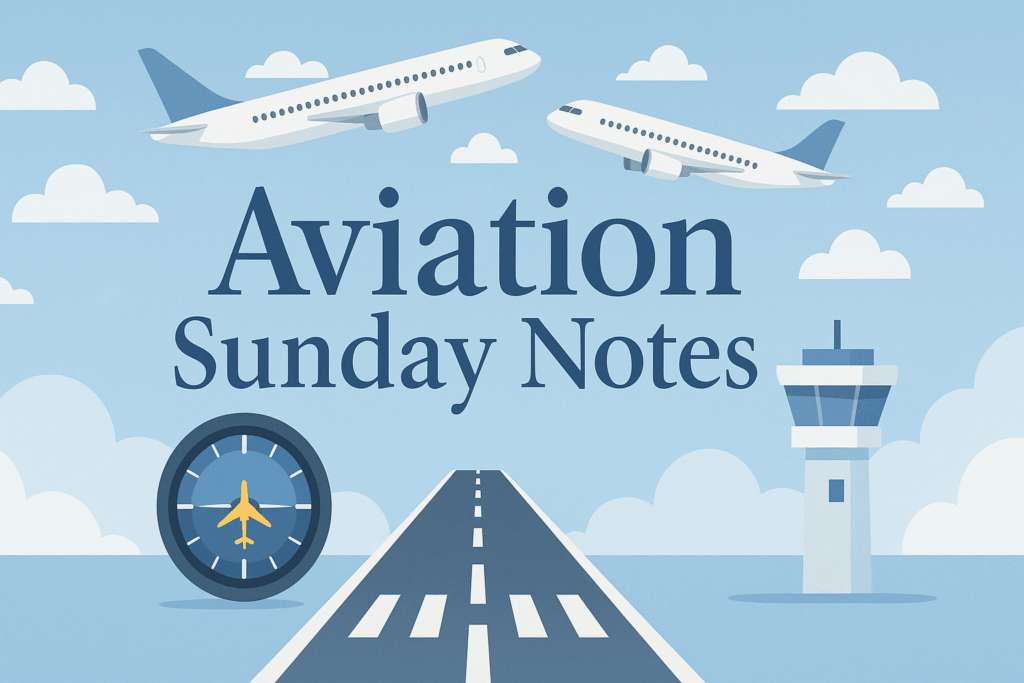[aviation news]
Today’s Aviation Sunday Notes looks at infrastructure failures and the rise of electric flight this week.
A radar glitch in northern Italy grounded 320 flights for two hours, exposing system fragility.
In Ukraine, an F-16 was lost in a drone and missile attack—its third since last year.
Indian regulators are downloading black-box data from the June 12 Air India 787 crash that killed 260, despite refusing UN investigators.
The “Scattered Spider” hacking group is targeting aviation firms, raising cybersecurity risks.
Meanwhile, Beta and Cento are showcasing electric air taxis and autonomous cargo drones.
Air Traffic Control Reliability…
On June 29Italy’s air traffic manager Enav said a radar glitch over Milan grounded all flights from 8:20 p.m. to 10:20 p.m., delaying about 320 departures and arrivals at Malpensa and Linate.
Enav switched to an emergency satellite system for planes already in the sky and froze new traffic under safety rules.
The fault arose from a telecom operator’s broken radar data link, revealing the danger of single-point failures.
Services resumed by midnight, but the two-hour outage caused major delays and highlights the need to strengthen and diversify air traffic control networks.
Geopolitical Conflict and Airspace Hazards

A Russian strike of over 500 drones and missiles downed Ukraine’s third F-16 since last year.
The pilot shot down seven targets before his jet was fatally damaged, killing him.
Zelensky renewed calls for Western air defences—especially Patriot batteries—to counter night raids that have hit civilians.
As flights skirt combat zones, the Ukraine war shows the need for rigorous risk checks, flexible routing, and tighter military-civil coordination.

Air India Crash Investigation Developments

The AAIB in India has retrieved the CVR and FDR data from the June 12 Air India Dreamliner crash that killed 260 people.
With U.S. NTSB help, investigators can now rebuild the flight, check engine thrust, and see if emergency power kicked in.
India refused ICAO’s offer of a UN investigator, drawing criticism over transparency and protocol.
A preliminary report is due in 30 days and will shape Air India’s procedures and global Boeing 787 rules.
Cybersecurity Threats to the Aviation Sector…

On June 27Google and Palo Alto warned that the “Scattered Spider” group is targeting airlines, ground handlers, and manufacturers.
They use phishing and network intrusions to steal credentials and slip malicious code into maintenance software, risking supply-chain and equipment tampering.
As aviation digitizes from flight planning to predictive maintenance, strong cybersecurity, continuous monitoring, and incident-response plans are essential.
Regulators are now reviewing ICAO Annex 17 and EASA protocols to see if they need tougher digital-security standards.
Innovation: Electric Air Taxis and Autonomous Cargo Flights

Beta’s five-seat electric air taxi made its first NYC tourist demo, offering quiet, zero-emission city flights.
Cento’s autonomous cargo plane ran a full loading-to-unloading test under USAF oversight, showcasing logistics potential.
These demos mark a shift: eVTOLs could transform urban transport, and unmanned cargo aircraft could ease supply chains.
Investors and regulators are eyeing certification and airspace integration to see when these innovations go commercial.
Outlook and Key Takeaways…
The events of June 29 underscore that modern aviation operates at the nexus of technology, geopolitics, and safety.
Infrastructure resilience must be bolstered through redundant control systems and diversified supply chains to mitigate incidents like the Italian radar failure.
Conflict zones such as Ukraine illustrate the growing complexity of shared airspace, demanding sophisticated risk-management strategies and allied support.
Meanwhile, the Air India crash probe highlights the criticality of transparent and rigorous investigations to restore public trust and guide preventative measures.
Cybersecurity alerts about “Scattered Spider” remind stakeholders that digital defences are as vital as physical ones, and emerging electric and autonomous platforms chart a promising, if challenging, path toward more sustainable flight.
For industry participants and travellers alike, staying informed on these converging trends is essential to navigating the future of flight safely and efficiently.
Share this content:


